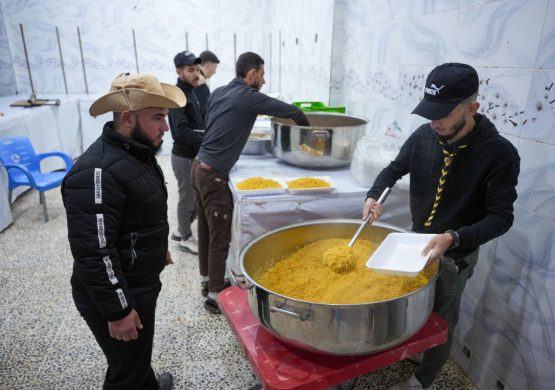På overfladen ser alt normalt ud med legende børn og forårets komme, men vinterregnen, der skulle gøde jorden for nye afgrøder, er næsten udeblevet og lokale bønder taler om den tørreste vinter i årtier – snart vil solen stege og det bliver sværere at få en blot nogenlunde høst i hus.
KARAK, 26 February 2014 (IRIN): On the surface all looks well: the sky above southern Jordan is deep blue and the sun is shining over fields of wheat and barley (byg). Some families are out playing in the fields and celebrating the first glimpse of spring.
But for farmers like Hatmal Halaseh, things are gloomy.
“Winter is over and the land is still thirsty. It is looking like a very dry year,” said the 60-year-old as he wandered between the fields inherited from his grandparents and planted for the past four decades with wheat.
Jordan’s agriculture relies on the rain that falls heaviest in December and January. This year has been exceptionally dry.
The Ministry of Water on 22 February warned that the country and the region as a whole are witnessing the “driest season in decades”.
The total rainfall in Jordan from the beginning of the 2013-2014 rainy season to the end of January 2014 is 2,608.8 million cubic metres (mcm) was almost 31,3 percent of the country’s long-term average annual precipitation (nedbør), compared to 6,371 mcm, almost 76,6 percent, the previous year.
The ministry warns that the country’s dams hold only 43 percent of their total capacity of 325 mcm.
Jordan’s is one of the world’s most water scarce (vandfattige) countries, with an annual per capita water supply of 145 cubic metres – less than 15 percent of the UN defined 1.000 cubic metre “water poverty” line.
Farmers and experts say the dry weather is only a continuation of poor weather over the past few decades that has left them struggling.
Study
A study (not online) by the former head of Jordan’s Meteorological Department, Abdul Halim Abu-Hazeem, indicates an 8 percent decrease in the country’s rainfall from 2001 to 2010.
Eastern and southern parts of the country were affected most, the study noted.
Rain-fed crops such as wheat, barley, beans and olives have been adversely affected, experts and farmers say.
By February, wheat should normally be 70 cm high, farmer Halaseh said, but now it is barely 15 cm, a trend he has been noticing over the past two decades.
The rainy season should be under way by the end of September or early October, said Adel Abdul Ghani, professor of agriculture studies at Mu’tah University in Karak Governorate, but in recent years the rains had come later.
This winter the first rainfall came on 1 November.
“Repeating dry years due to changing rainy seasons and a shortage of rainfall observed since 1994,” said Ghani, discouraged many farmers from planting their fields as they were “no longer profitable”.
Low take-up of new wheat variety
Læs videre på
http://www.irinnews.org/report/99706/jordanian-farmers-face-driest-season-in-decades














